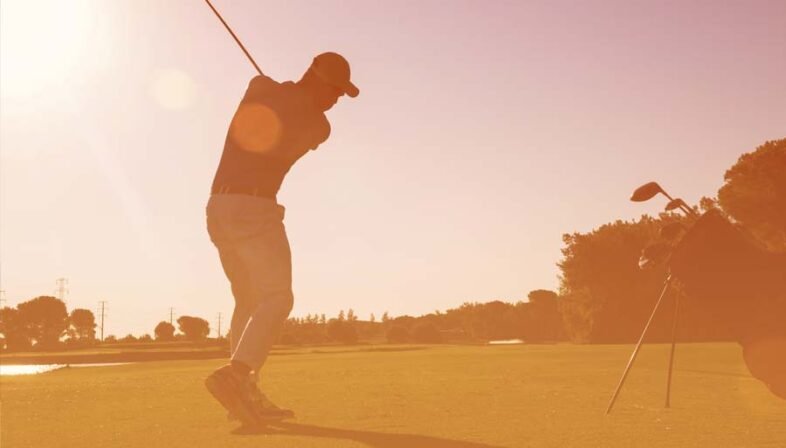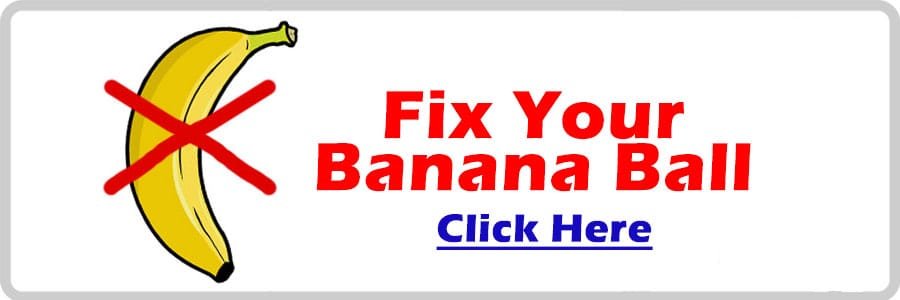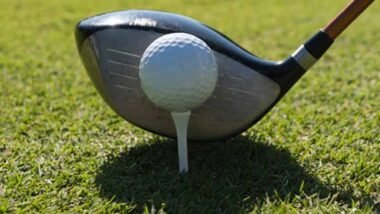Have you ever found yourself frustrated on the golf course, watching your ball slice dramatically off to the right? If you have, you’re certainly not alone. Many golfers struggle with slicing, and the good news is that you can address this pesky issue without overhauling your entire swing mechanics.
Understanding the Slice
To effectively combat slicing, it’s crucial to grasp what exactly a slice is. A slice occurs when the ball spins off to the right for right-handed golfers (and to the left for left-handed golfers). This typically happens due to an outside-to-inside swing path combined with an open clubface at impact.
Common Causes of a Slice
Let’s take a moment to consider the common reasons why you might be slicing the ball:
- Incorrect Grip: A grip that’s too weak can prevent you from closing the clubface properly at impact.
- Open Clubface: If your clubface is pointing right at contact, it will impart clockwise spin, causing the slice.
- Swing Path: A swing that moves from outside to inside might be inducing that unwanted slice.
- Poor Alignment: If you misalign your body, you might unintentionally compensate in your swing, leading to slicing.
Understanding these factors can help you make targeted adjustments to your game.
Adjusting Your Grip
One of the first areas to look at when you’re trying to eliminate your slice is your grip. Your grip serves as the foundation of your control over the clubface.
How to Check Your Grip
- Position: Hold the club as if you’re shaking hands with it. Your fingers should wrap around the grip.
- Grip Pressure: Make sure you’re holding the club firmly but not too tightly. Too much tension can hinder your swing.
Modifying Your Grip
If you suspect your grip is too weak, consider adjusting it to the right. Rotate your hands slightly to the right (for right-handers) to strengthen your grip.
| Grip Type | Description | Effect on Slice |
|---|---|---|
| Weak Grip | Hands are rotated too far to the left | Increases likelihood of open clubface |
| Neutral Grip | Hands are in a comfortable position | Promotes better control over the clubface |
| Strong Grip | Hands rotated slightly to the right | Encourages a closed clubface at impact |
Getting your grip right can often have a significant positive impact on your slicing.
Aligning Your Body
Another critical factor in managing a slice is your body alignment as you prepare to hit the ball. A misaligned body can create a swing that perpetuates your slicing problem.
Checking Your Stance
- Feet Position: Stand with your feet shoulder-width apart and make sure they are parallel to your target line.
- Shoulder Alignment: Your shoulders should align with your hips and knees. They shouldn’t be pointed to the left.
- Ball Position: Adjust the position of the ball in your stance; placing it farther forward in your stance may help as well, depending on the club you are using.
Benefits of Proper Alignment
When your body is properly aligned, you set yourself up to swing more naturally. A good alignment helps in establishing an inside path for your arms and body, which can greatly reduce slicing.
Improving Your Swing Path
Your swing path plays a critical role in whether or not you slice the ball.
What is an Inside-to-Out Path?
An inside-to-out swing path occurs when the club travels from inside your target line to outside it on the follow-through. This motion helps to add the right spin to your ball.
Drills to Encourage an Inside-to-Out Swing
You can practices this path with a few drills. Here are two to get started:
- Tee Drill: Place a tee inside the target line. As you swing, aim for the ball while focusing on avoiding the tee. This encourages an inside-to-out swing.
- Alignment Stick Drill: Use an alignment stick on the ground, angled away from your target. As you practice, aim to swing along the path of the stick, which will help reinforce that inside path.
| Drill | Objective | How to Perform |
|---|---|---|
| Tee Drill | Encourages inside-to-out path | Set a tee inside the target line and avoid it while swinging |
| Alignment Stick Drill | Reinforces swing path | Place a stick angled away from the target and aim your swing along the stick |
These drills will help you adapt your swing path without changing your entire swing mechanics.
Adjusting Clubface Angle
Another significant contributor to slicing is the angle of your clubface at impact. You want to ensure that your clubface is square upon impact—or at least closed.
How to Achieve a Square Clubface
To achieve a square clubface at impact, you might consider:
- Focus on Your Wrists: Ensure your wrists aren’t breaking down during your swing, which can lead to an open clubface.
- Practice with a Mirror: A mirror can help you visualize your swing. Check if your clubface is closed or square at the top of the backswing.
Improving Clubface Control
Suppose your clubface still tends to be open at impact. In that case, you can incorporate some of these strategies:
- Practice Closing the Clubface: Before every swing, mentally remind yourself to close the clubface.
- Use Drills That Focus on Clubface Control: For instance, hit shots with an exaggerated release to help drill the feeling of closing the face.
Implementing Mental Adjustments
Tackling the issue of slicing isn’t solely physical; it involves a mental aspect as well. Staying focused and reducing anxiety can lead to better performance.
Visualization Techniques
Before you take your shot, try visualizing the desired shot shape:
- Picture the Ball Path: Imagine how the ball will arc in the air, avoiding the slice.
- Set Up Confirmation: Affirm that your alignment and grip are correct before executing the shot.
By focusing your mind on the task, you can often help your body execute movements that align with your intentions.
Using Equipment Wisely
Sometimes, your equipment can contribute to slicing issues, particularly the type of club or ball you’re using.
Choosing the Right Golf Ball
Certain golf balls are designed to reduce spin and promote more stability in flight. A ball that helps control excess spin can help mitigate slicing.
Picking the Right Club
The club’s loft and design can also impact your slice. Sometimes switching to a driver with a higher loft can lead to better control of spin, helping to reduce the likelihood of a slice.
| Equipment | Factor | Effect on Slice |
|---|---|---|
| Golf Ball | Spin Control | Reduces the likelihood of excessive spin causing a slice |
| Driver Type | Loft and Design | Helps mitigate slicing when using the right specifications |
Investing in the proper equipment tailored to your swing can make a significant difference.
Regular Practice and Feedback
To effectively eliminate a slice, dedicated practice is key. Implement a structured routine that focuses on the adjustments you’ve made.
Creating a Practice Plan
Your practice plan should include:
- Regular Drills: Incorporate the drills mentioned, like the tee and alignment stick drills.
- Feedback Mechanisms: Consider recording your swings or working with an instructor to get immediate feedback.
| Practice Element | Purpose | Frequency |
|---|---|---|
| Drills | Reinforce proper swing paths and clubface control | 2-3 times a week |
| Feedback | Identify areas for improvement | Weekly sessions with an instructor |
The more consistently you practice the desired adjustments, the more natural they will become.
Conclusion
Overcoming the challenge of slicing doesn’t require a complete overhaul of your swing. By understanding the underlying causes, adjusting your grip, body alignment, swing path, and clubface angle, and integrating mental techniques along with proper equipment, you can tackle that slice head-on.
Remember, persistence and practice are essential. Embrace the ongoing process of improvement, and soon you’ll find yourself enjoying a more effective and controlled game. Happy golfing!








